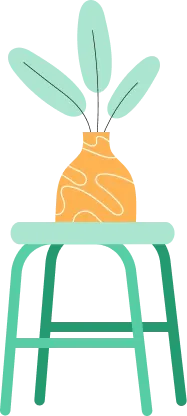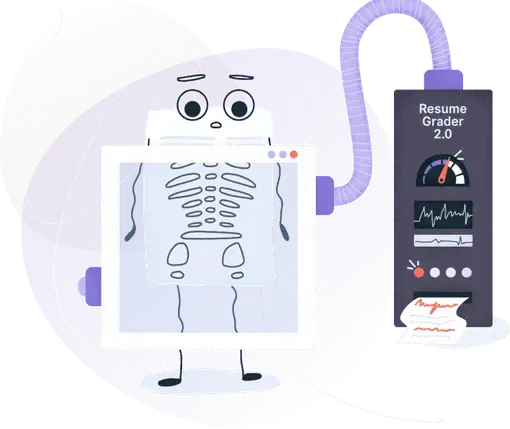3d Printing Skills: Example Usage on Resumes, Skill Set & Top Keywords in 2024
Including 3D printing expertise on your resume signals to recruiters that you are skilled in current technological innovations and demonstrates your ability to adapt to new tools and processes. Dive into our guide for inspiration on how to effectively integrate this skill into your resume, exploring synonyms and alternative phrasings to stand out to potential employers.


Is your resume ATS-friendly?
Drop your resume here or upload a file to find out if the skills in your resume are readable by an ATS.
3D printing, also known as additive manufacturing, is the skill of creating three-dimensional objects from a digital file. By mastering the techniques and software involved in 3D printing, an individual can fabricate objects by layering materials such as plastic, metal, or concrete. This skill demonstrates an ability to work with cutting-edge technology and can add a modern and innovative twist to a resume. It shows potential employers that you are familiar with current manufacturing methods and are capable of turning concepts into tangible items.
However, simply listing "3D printing" on your resume might not fully convey your expertise to a potential employer. It might suggest a passing familiarity rather than a deep, hands-on experience. To truly strengthen your resume, it is better to focus on specific projects or applications where you've utilized 3D printing and to highlight the results or value delivered by your work. By doing this, you transform a generic skill into a clear demonstration of your problem-solving capabilities and practical experience.
In this article, you will learn:
- Examples of how to effectively showcase your 3D printing experience on your resume.
- Common mistakes to avoid when listing 3D printing as a skill on your resume.
- Alternative words and phrases to describe your 3D printing expertise more precisely.
Misusage of 3d printing on resumes
Incorporating your 3D printing skill set on your resume can showcase your technical expertise, but misuse or overstatement in different resume sections can backfire, making you appear unprofessional or out of touch with the actual demands of the job. A precise and relevant presentation of your abilities is vital to make a strong impression on potential employers, ensuring that you stand out for the right reasons. Here are three common missteps to avoid:
- In the summary section, avoid vague declarations such as "3D printing enthusiast with a passion for creating anything imaginable."
- Within the experience section, steer clear of irrelevant job responsibilities, for example, "Managed office print station, occasionally using 3D printing for personal projects."
- When listing achievements, don't overstate your impact or claim ownership of team efforts; a misleading entry could be "Solely revolutionized the company's production process through 3D printing, reducing costs by 70%."
How to demonstrate 3d printing skills on your resume
- List specific 3D printing technologies you've worked with such as FDM, SLA, or SLS.
- Highlight projects that required design and printing of complex geometries or functional prototypes.
- Detail any software expertise relevant to 3D modeling and slicing, like SolidWorks, AutoCAD, or Cura.
- Include successful outcomes from printed designs, such as efficiency improvements or problem-solving achievements.
- Mention any experience with post-processing techniques like sanding, painting, or assembly of printed parts.
Example 1: Demonstrate 3d printing in the experience section
- •Developed complex 3D printing schematics for over 40 custom client projects, enhancing overall client satisfaction by 25%.
- •Oversaw the 3D printing of prototypes that reduced material costs by 15% through the use of efficient design and printing techniques.
- •Facilitated workshops on 3D printing technologies for new employees, leading to a 30% decrease in onboarding time.
- •Collaborated on a team that received a company excellence award for streamlining production processes, resulting in a 10% increase in project turnaround time.
- •Guided a team of 5 in the creation of intricate 3D models, leading to the company's breakthrough in the medical prosthetics market.
- •Pioneered a new filament recycling system, reducing waste by 20% and promoting sustainable 3D printing practices.
- •Enhanced client prototypes’ print resolution by innovating with new software settings, elevating product quality.
- •Operated and maintained ten industrial-grade 3D printers, achieving a 98% uptime and maximizing production capacity.
- •Implemented a quality control system for 3D printed parts, leading to a 40% reduction in print errors.
- •Trained 15+ staff members on 3D printer operations, promoting knowledge sharing and team proficiency.
- This experience section clearly shows a progression of skills and responsibilities in 3D printing, providing a timeline of professional growth.
- Each bullet point delivers specific and measurable outcomes that directly relate to the positions held, illustrating the impact the applicant had at each company.
- Project-specific details demonstrate the candidate's hands-on experience, adding credibility to their expertise in 3D printing.
- Descriptions avoid overused jargon, focusing instead on clear, quantifiable achievements that demonstrate value to potential employers.
Example 2: Demonstrate 3d printing in the summary section
- The summary clearly states the applicant's years of experience and passion for their work, immediately showing dedication and expertise in 3D printing.
- Technical skills such as proficiency with CAD/CAM software and the operation of various 3D printers are mentioned, directly indicating capability.
- The summary highlights a significant career achievement, showcasing the ability to make impactful contributions through design optimizations and cost savings.
- By focusing on specific outcomes and personal involvement in a project, the summary avoids vague language and demonstrates the value the applicant can bring.
- Writing in a straightforward manner clarifies the applicant's qualifications without resorting to cliches or overused buzzwords.
Example 3: Demonstrate 3d printing in the achievements section
- The achievements provide clear examples of 3D printing skills in action with quantifiable results.
- They avoid overused phrases and stick to factual, straightforward language.
- The word count in titles is limited to eight or fewer, making them easy to read and engage with.
- Descriptions are detailed, offering a snapshot of the individual’s work experiences and successes without being long-winded.
- Using concrete numbers gives a real sense of the applicant's impact on previous projects.
- The resume section doesn't lean on buzzwords but still communicates the applicant's proficiency and achievements.
What are the relevant certifications for 3d printing skills on resume
Enhance your resume by obtaining these certifications in 3D printing to demonstrate your expertise and improve your skills:
The top 5 certifications for gaining 3d printing skills expertise:
Top skills people add together with 3d printing skill on resume:
CAD
3D Modeling
Slicing Software
Material Science
Prototyping
Mechanical Design
CAD/CAM Software
Manufacturing Processes
Engineering Principles
Design for Additive Manufacturing
Problem Solving
Attention to Detail
Creativity
Time Management
Adaptability
Project Management
Teamwork
Communication Skills
Continuous Learning
Technical Writing
Critical Thinking
Most relevant jobs for 3d printing skills
- Industrial Designer - Creating product prototypes and functional designs with 3D printers.
- Mechanical Engineer - Applying knowledge of mechanics and materials in combination with 3D printing for component production.
- Manufacturing Engineer - Integrating 3D printing into production processes for improved efficiency and product development.
- Architect - Employing 3D printing to create scale models and explore complex structural designs.
- Jewelry Designer - Using 3D printing to craft intricate, personalized pieces and molds.
- Dental Technician - Producing dental appliances, crowns, and bridges with precise 3D printing techniques.
- Biomedical Engineer - Developing medical devices and prosthetics through 3D bioprinting technologies.
- Aerospace Engineer - Designing and testing aircraft components with lightweight and durable 3D printed materials.
- Research and Development Scientist - Innovating new materials and applications for 3D printing technologies.
- 3D Modeler - Crafting detailed digital models for 3D printing in various industries, such as gaming, film, and product design.
Key takeaways
- 3D printing skills can enhance your resume by demonstrating technical proficiency and adaptability to innovative manufacturing processes.
- Avoid misusing 3D printing skills by staying informed about ethical considerations and proper use of the technology.
- Show off your 3D printing expertise on your resume by including specific projects, results, and familiarity with relevant software and hardware.
Make one that's truly you.



